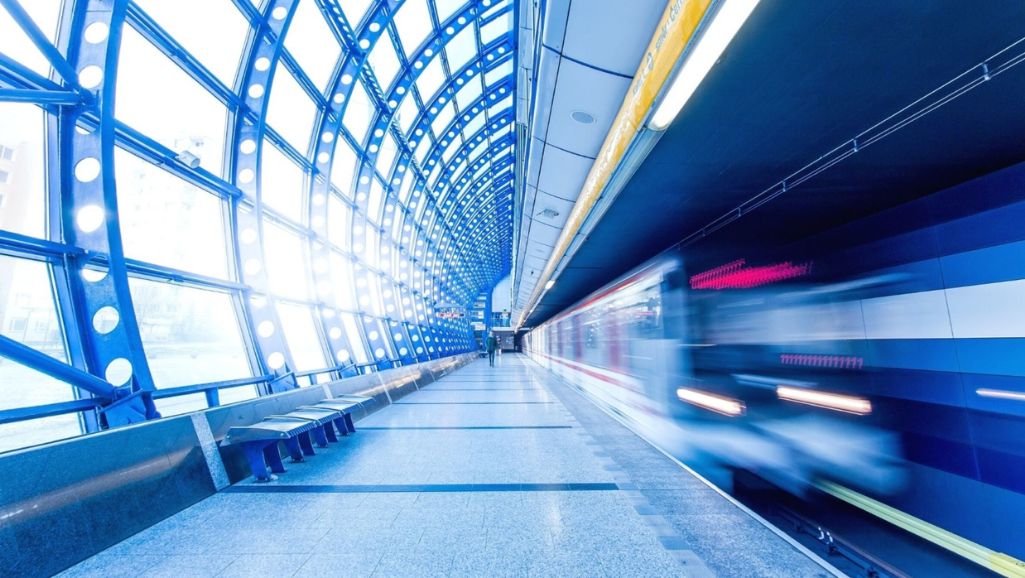Last year, Councillor Adam Zábranský (Pirates) confirmed the removal of sausage vendors from Wenceslas Square, prompting many to seek alternatives.
Café Tramvaj, with its inviting outdoor seating and diverse menu, became a popular choice.
However, councillor Giancarlo Lamberti (TOP09) reported on his social media that the business, established in 2001, no longer possessed a valid lease or permit for the temporary structures used for the outdoor seating area.
According to Lamberti, the café’s lease agreement with the city had expired in 2023. Despite this, the operators continued to set up the outdoor seating at the beginning of this year. Further investigation revealed that receipts issued by the café lacked mandatory information. Lamberti reported these findings to Mayor Terezie Radoměřská and Councillor Zábranský, leading to a complaint being filed with the authorities.
As of today, Café Tramvaj is closed, with no further information available at the entrance.
The operator now faces potential fines from various departments. The exact amount will depend on the final findings of the Trade Licensing Office, Building Authority, and Finance Department.

Photo: Giancarlo Lamberti
Prague 1 officials have indicated that fines could reach up to CZK 500,000 for failing to register for local taxes, with potential back taxes for the past three years.
The closure of Café Tramvaj marks the end of an era for Wenceslas Square. With investigations ongoing, it remains to be seen what the future holds for this once-popular spot.
Would you like us to write about your business? Find out more
* SURVEYS:
More Czechs attribute responsibility for the current escalation of the conflict in the Middle East to Palestine (22 percent) than to Israel (6 percent), according to a survey published by the Public Opinion Research Centre (CVVM). However, the largest number (40 percent) place the blame equally on both sides, the poll found.
* AGRICOLTURE/strong>:
Damage to fruit harvests due to the recent overnight frosts could exceed CZK 1 billion, fruit growers estimate. The cold temperatures destroyed almost 100 percent of the harvest in Bohemia and about 50 percent of the harvest in Moravia, although the situation may worsen there as ground frosts are expected to continue in the southwestern part of the country until Friday night.
* WEATHER:
Friday is expected to be mostly overcast but dry, with a chance of some sunshine in the morning. Daytime temperatures should range between 8 and 15 degrees Celsius.
* INTEGRATION:
Amnesty International has criticised the Czech Republic for hate speech and discrimination against Ukrainian refugees, continuing segregation of Roma children in education, and the export of weapons to Israel in its annual report on human rights in the country, released yesterday. Ukrainian refugees faced obstacles to integration, including language barriers in schools, the report says.
* JOB MARKET:
According to data from Eurostat, the statistical office of the European Union, the difference in wages between women and men across sectors, professions and job positions in the Czech Republic is an average of 17.9%.The results of the latest analysis by the Platy.cz portal reveal an even larger gap of 28%.
Starting Monday, April 29th, a major tram closure will disrupt service for two months.
The Prague City Transport Company (DPP) must undertake a complete reconstruction of the tram line running along Dlážděná and Havlíčkova Streets in Prague 1.
This project, unfortunately, necessitates significant changes to over twenty tram and bus lines across Prague’s northeastern area.
The modifications affect both daily tram routes (1, 3, 6, 7, etc.) and night trams (91, 92, etc.). Several bus lines (207, 905, etc.) will also experience detours or renumbering. Even the historic tram 42 won’t escape the reshuffling.
Here’s a breakdown of the key changes:
Modified Routes: Daily trams 1, 7, 12, 15, 24, and 25, along with night trams, will follow altered routes.
Renumbered Routes: The remaining affected lines will operate under temporary numbers during their journeys.
Tram Renumbering Details:
Line 3 (Modřany direction): Jindřišská stop to Senovážné náměstí stop, then continues as line 26 towards Nádraží Hostivař.
Line 6 (Kubánské náměstí direction): Travels to Karlovo náměstí, then continues as line 14 towards Spořilov.
Line 14 (Spořilov direction): Shortened to Karlovo náměstí stop, then runs as line 6 towards Kubánské náměstí.
Line 26 (Nádraží Hostivař direction): Runs from Hlavní nádraží to Senovážné náměstí, then continues as line 3 via Jindřišská stop towards Sídliště Modřany.
New Additions and Temporary Stops
The DPP will introduce temporary tram lines (30, 31, 34, and 90) and alternative bus services (X25 and X94).
Three temporary stops will also be established: Masarykovo nádraží (near Na Poříčí and Havlíčkova intersection), Senovážné náměstí (at Dlážděná intersection), and Vltavská (on Hlávkova Bridge forebridge).
These additional stops will serve not only trams but also the rerouted bus lines (207, 905, etc.).
We recommend checking the DPP website or app for the latest updates on specific routes and timetables.
Would you like us to write about your business? Find out more
SCAT Airlines from Kazakhstan is set to introduce a non-stop air service connecting Prague and Astana, starting May 22, 2024.
The flights are scheduled twice a week, on Wednesdays and Saturdays, as announced by the Prague airport’s press service.
Tickets are available for purchase now, with the starting price for a one-way flight at 175 euros (approximately 4300 crowns).
The travel duration for this direct route is estimated to be 4 hours and 5 minutes.
The Boeing 737-700 aircraft, accommodating 149 passengers, will operate this convenient air link.
Here are some of the best things to see and do in Astana.
A panoramic tower
With its 360-degree city views, Bayterek Tower, in the centre of Nurzhol Boulevard, is the best place to get your bearings. From the top of this landmark building, the new city unfolds beneath you, with eye-catching architecture at every turn.
A white tower with a golden sphere at its apex, this ensemble symbolises the tree of life where the samruk, a mythical bird of happiness, lays its golden egg. The enclosed, spherical viewing platform, located at a height of 97 metres, marks the year, 1997, when it was decided to move the capital north from Almaty.
On the upper floor of the observation deck you can put your own hand into a bronze handprint of Kazakhstan’s first president, Nursultan Nazarbayev, and make a wish to a background of patriotic music and flashing lights.
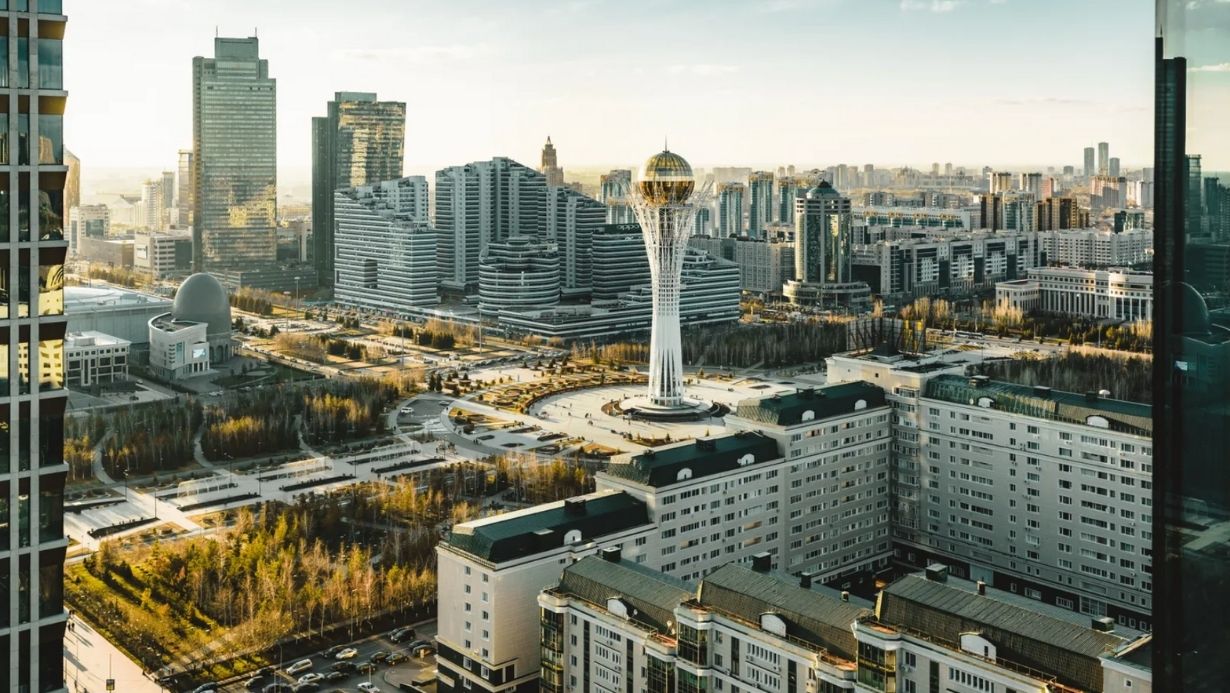
Independence Square
If you head east from the tower, in the distance you’ll see Akorda, the white marble presidential palace that is topped with a blue dome, and across the river lies the city’s largest public space, Independence Square.
The square has a soaring column topped with a golden samruk, that mythical bird of happiness. As with Bayterek, the height of the monument is loaded with symbolism: it rises 91 metres into the sky to mark the year when Kazakhstan became independent from the Soviet Union in 1991.
Around Independence Square there’s a Norman Foster-designed glass pyramid, the Palace of Peace and Reconciliation, home to a theatre and art gallery, the impressive Hazrat Sultan Mosque, made with more pristine white marble and the futuristic building that houses the National Museum of the Republic of Kazakhstan, made from yet more white marble.
The museum tells the story of Kazakhstan from the prehistoric period to the construction of Astana and beyond in a series of themed halls. It features a giant, mechanised golden eagle, a symbol of Kazakhstan’s independence, flying over a huge map of the country.
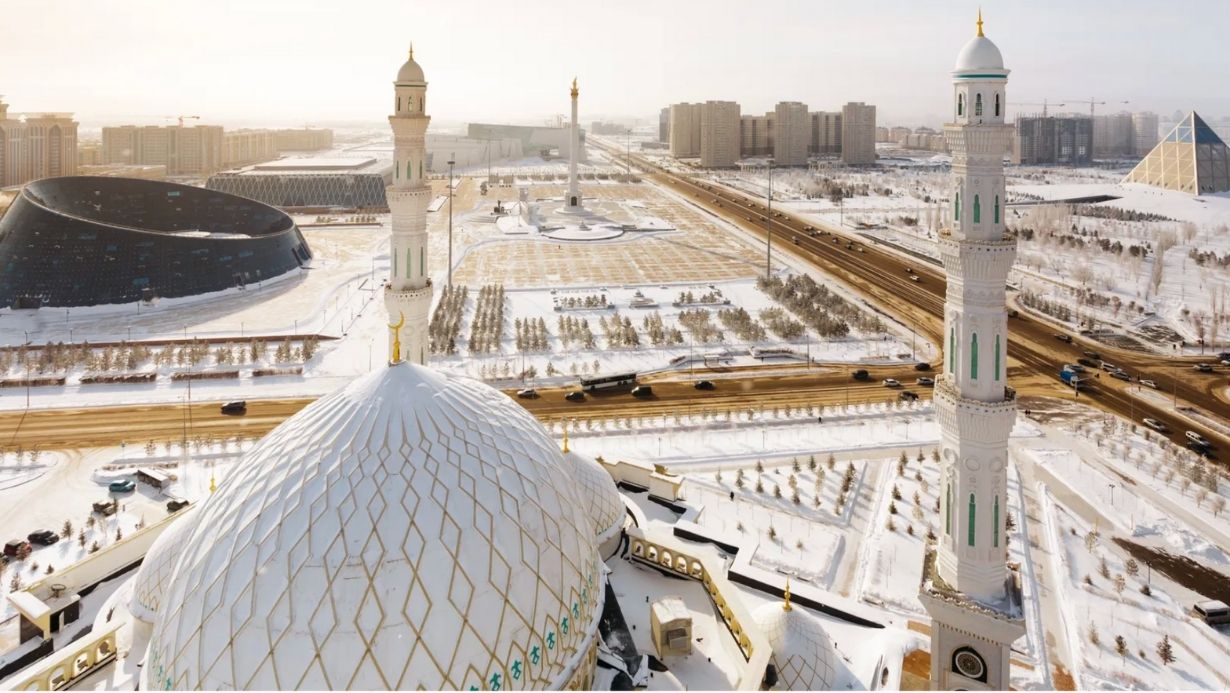
The ruler’s marquee
Heading west from Bayterek, Khan Shatyr, another Norman Foster building, looms on the horizon at the end of the boulevard. The transparent, tent-like dome of this shopping and entertainment complex is one of the city’s most recognisable landmarks.
Khan Shatyr is designed to have a constant temperature all year round, a major plus in a city that has an extreme continental climate, meaning it has scorching summers and frozen winters.
The complex combines designer shopping and leisure activities, with Sky Beach Club the key attraction. Located within the transparent roof, it comes complete with a beach and an indoor pool: who would have thought you could lie on the sand in a landlocked country while the outside temperature nudges minus 30°C?
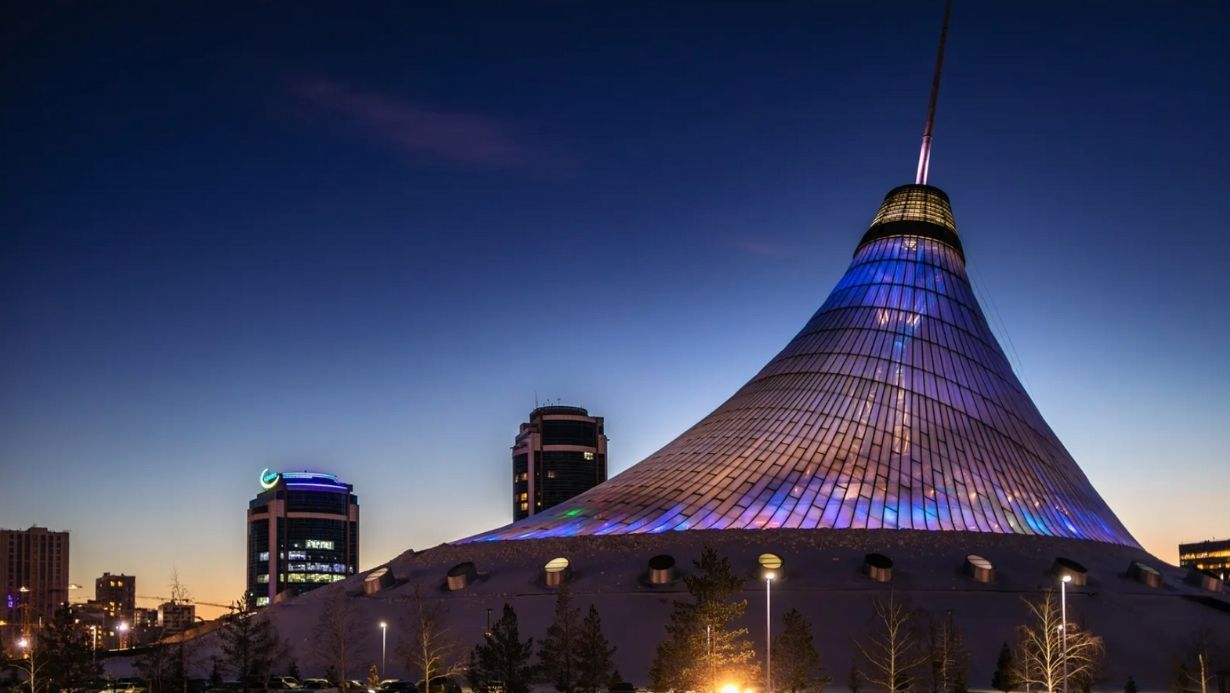
Walking Astana
Nurzhol Boulevard is a great place to stretch your legs. Walking along the avenue from Bayterek to Khan Shatyr takes you past Astana Opera, a neoclassical theatre that stands out from the surrounding post-modern architecture.
Alongside classics of world opera and ballet, the theatre performs many local works, such as the ballet Karagoz, a tale of doomed love, and Kyz Zhibek, the Kazakh Romeo and Juliet.
The boulevard also has a number of restaurants and cafes. To sample some Kazakh traditional food, head for Saksaul, just off Nurzhol Boulevard, a restaurant that specialises in meat and pasta dishes, including beshbarmak, consisting of meat piled on pasta squares, laghman noodles and manty dumplings.
In 2017, Astana hosted the international Expo exhibition. A whole new suburb was built here. At its heart is a huge glass sphere that is now an interactive museum. The Expo site hosts a lot of concerts in the summer months.
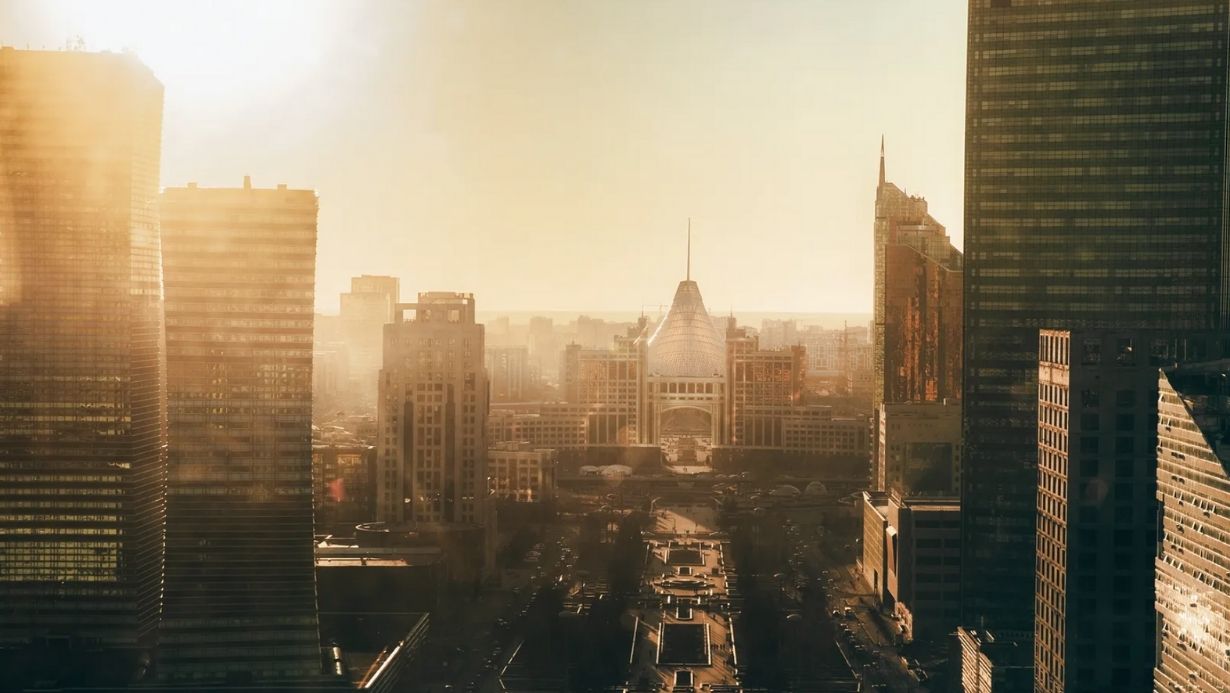
A stroll along the embankment
The embankment of the Yesil, the river that divides Astana, is perfect for an evening stroll. Funky Atyrau Bridge that connects the two halves of the city resembles a fish twisting through the water, with its covered section decorated with thousands of metal scales, bringing to mind the Caspian Sea beluga sturgeon, the fish that produces black caviar.
In summer, pleasure boats ply the Yesil’s waters and there are seasonal beaches where you can take a cooling dip in the river. In the depth of winter the river freezes over and the ice skating season begins. It’s also a popular spot for ice fishing, look out for snugly dressed anglers huddled over holes drilled into the ice.
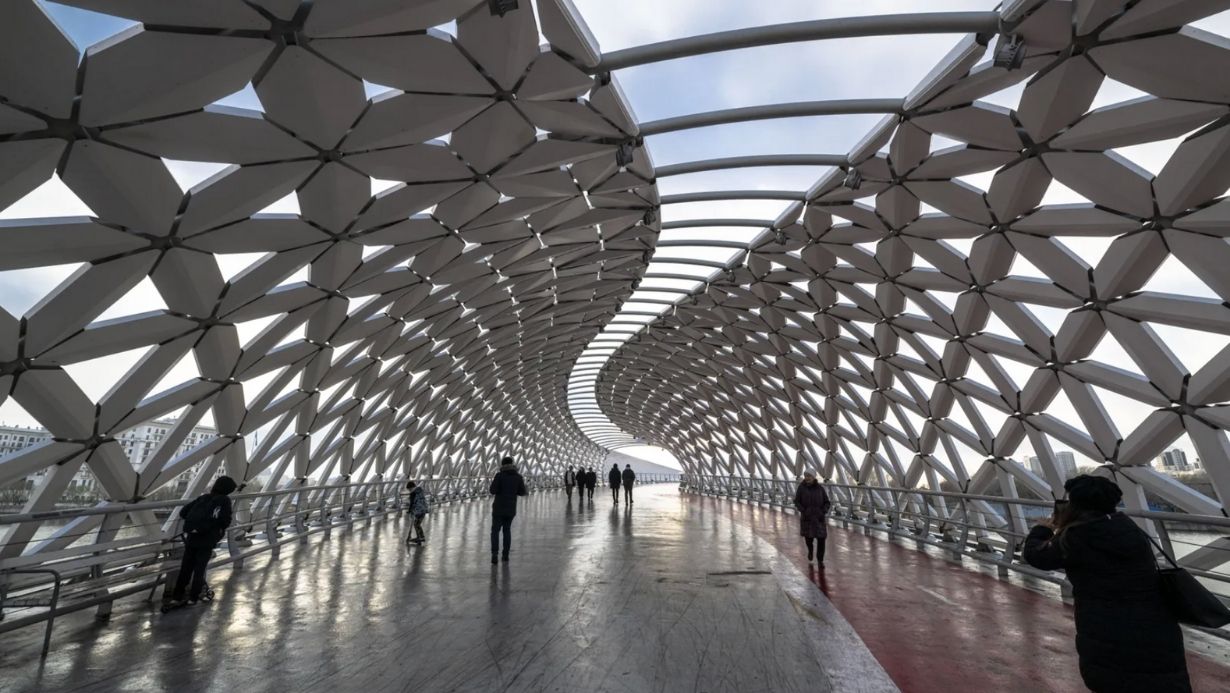
* POLITICS:
The head of the European Commission, Ursula von der Leyen, will visit Prague on Tuesday 30 April. Von der Leyen ’s visit is part of her election campaign for the European People’s Party and her own bid for a second term in office as President of the European Commission. In Prague she is to meet with representatives of parties running in the elections, especially from TOP 09 and the Christian Democrats which are in the EPP.
* CLIMATE:
Sub degree temperatures continue to cause problems around the country with monitoring stations reporting night time lows of -10 to – 15 degrees Celsius in some parts of the country and fresh snow in the mountain regions. Farmers are concerned about the effects of the cold spell on this year’s harvest with some predicting losses of up to 40 percent.
* WEATHER:
Thursday is expected to be overcast and cloudy with a chance of rain. Daytime temperatures should range between 4 and 10 degrees Celsius.
* TRAVEL:
SCAT Airlines is set to resume flights between the capitals of Kazakhstan and the Czech Republic on the route Astana – Prague from May 22. Flights will be operated twice a week on Wednesdays and Saturdays on Boeing 737 aircraft, designed for 186-189 passengers.
* POLITICS:
The European Commission has appointed former Czech environment minister Jan Dusík as Deputy Director-General for Climate Action. The main mission of this department is to support the Commission’s efforts to fight climate change both within the EU and internationally. Dusik, who has extensive professional experience in the area of climate action, is now among the highest-ranking Czech officials in the EU.
Prague’s iconic rooftop club, DupleX, has secured its status as a global dance music powerhouse by securing a spot in DJ Mag’s prestigious Top 100 Clubs list for 2024.
This year’s ranking saw a record-breaking number of votes cast from a staggering 229 countries. DupleX rose an impressive 14 places compared to 2023, landing at the 39th position.
The prestigious British magazine DJ Mag describes DupleX as:
“Every night of the week, the world’s most prestigious EDM DJs come and play at DupleX, The Rooftop Club, a luxury nightclub overlooking Wenceslas Square. Steve Aoki, Timmy Trumpet, NERVO, Fedde Le Grand, Vini Vici, Purple Disco Machine and Jay Hardway have been a handful of highlights from the past year, not to mention DupleX’s own high-profile resident DJs, who build lasting connections with these international stars. And 2024 is set to be equally ambitious for this leading superclub, with Tiësto recently headlining Easter weekend.”
DupleX features two fully conditioned floors, five bars, two chill-out rooms with plush sofas (perfect for people watching) a VIP lounge, and a rooftop terrace with amazing views of Old Town Square, Prague Castle and other Prague sights.
The club stays open every week from Monday to Sunday into the wee hours of the morning. After all, it was clearly not a mere coincidence that Mick Jagger celebrated his 60 birthday at DupleX during his visit to Prague!
Would you like us to write about your business? Find out more
To celebrate the 20th anniversary of the Czech Republic’s entry into the European Union, the creators of the popular webcomic “Opráski sčeskí historje” decided to have some fun.
They imagined how Czech banknotes might look if the country adopted the euro currency, adding a unique twist.
Instead of the usual European figures and monuments, these banknotes would showcase some of the Czech Republic’s most recognizable cultural icons:
-
Forget the stoic faces on traditional euros. Here, the Brno astronomical clock, a beloved local landmark known for its, ahem, “phallic” features, takes center stage.
-
Move over, fashionistas! The Czech euro features a man rocking the iconic socks-and-sandals combo, a guaranteed conversation starter.
-
No Czech list would be complete without beer, and the euro wouldn’t be an exception. A mug of the country’s favorite beverage would be a refreshing addition to any wallet.
-
European banknotes typically feature historical figures, but the Czechs take a different approach. Their euro would be graced by the image of a the Little Mole (Czech: Krtek, Krteček), a series of cartoons as well as the name of their title character, created between 1957 and 2002.
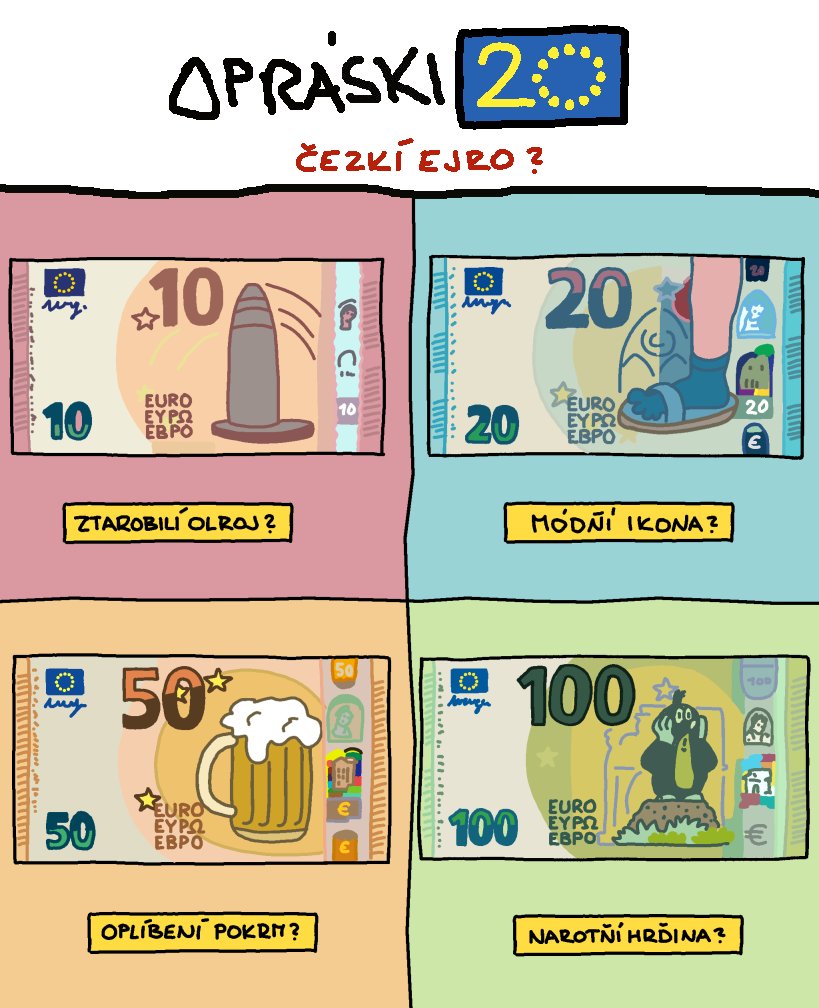
Would you like us to write about your business? Find out more
As every year, herds of sheep, goats, and cows graze grass in selected green areas in Prague.
According to City spokesman Vít Hofman, this year four mixed flocks of sheep and goats and two flocks of calves will graze Prague’s green areas until early November.
Every year from spring to autumn, the animals feed in dozens of places, mainly in the Prokopské and Šárecké valleys, in the Troja basin, in the Radotín valley, but also and in gardens in Hrdlořezy or in Na Vidouli.
The municipality borrows animals from private farmers.
“Grazing for the capital city is managed by private farmers, who also provide 24-hour surveillance of the herds and flocks. The shepherds also make sure that the sheep only graze on the lands that they are intended for. The annual cost of grazing of sheep and goats is approximately 950,000 crowns, and in the case of cattle it is about 450,000 crowns,” said Hofman.
The grazing of sheep and goats has primarily been taking place in specially protected areas in Prague since the year 2000, while cattle grazing began in 2012.
It is provided and financed by the Environmental Protection Department of the Prague City Hall.
At the end of the season, the animals are returned back to farms. The changing grazing dates in each territory also ensures that the animals do not graze identical plant species every year.
In hard-to-reach areas, grazing is the only way to take care of sites. According to the municipality, this method of green maintenance creates suitable conditions for maintaining biodiversity.
By grazing the grass, the animals disrupt the turf, creating areas without vegetation, which contributes to species diversity.
Would you like us to write about your business? Find out more
A new memorial opened on Tuesday in the Czech Republic on the site of a former Nazi concentration camp for Roma, after a communist-era pig farm was removed.
The official opening capped a process that took decades and was made possible after the Czech government agreed to remove the farm.
“It´s very positive news for me that the whole project was completed,” said Jana Horvathova, the director of the Museum of Romani Culture, whose organization is in charge of the memorial.
Roma and human rights activists had long demanded the removal of the farm from Lety, 95 kilometers south of Prague, where some 1,300 Czech Roma were sent between August 1942 and August 1943 during the Nazi occupation of what was then Czechoslovakia in World War II.
At least 335 people died there, according to the latest research, the museum said, while most of the others were taken to the Nazis´ Auschwitz death camp.
“Most of all, we’re here not to forget because to remember the horrors of the past is the best protection against living though them again,” Prime Minister Petr Fiala said at an opening ceremony that he attended together with President Petr Pavel.
The government acquired the farm, which had some 13,000 pigs and was established in the 1970s, in 2018 from a private owner for some 450 million Czech crowns. Previous governments failed to do it, citing a lack of funding.
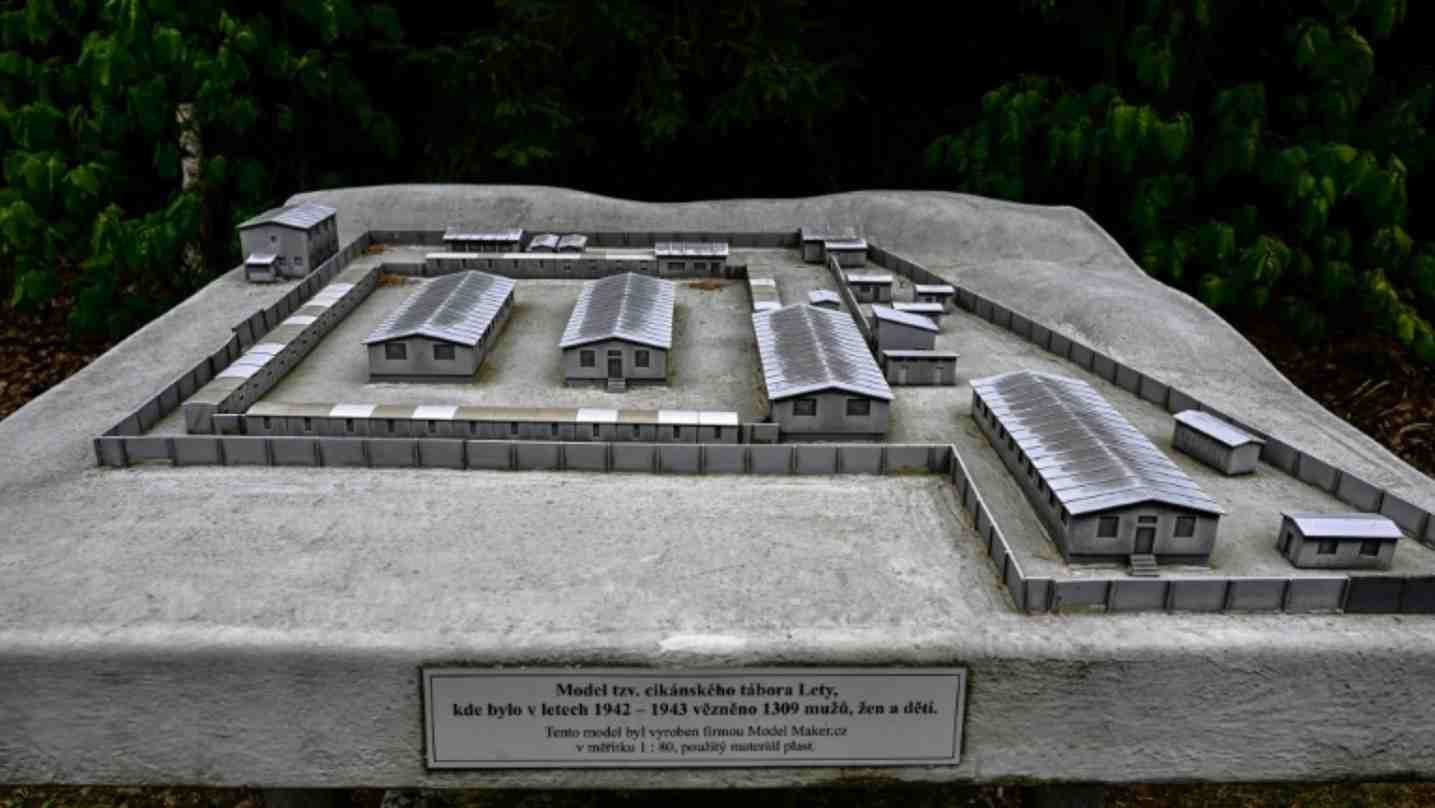
After an archaeological investigation, the pig farm was demolished in 2022 before work began on the memorial.
The site houses the records of memories of survivors, as well as details from the effort to remove the pig farm, which began after then-President Vaclav Havel unveiled a monument nearby in 1995.
Only about 600 of some 6,500 Roma living on occupied Czechoslovak territory in 1942 are estimated to have survived the war. The current 250,000-strong Roma minority faces widespread prejudice.
Would you like us to write about your business? Find out more
* EURO:
Czech businesses express overall support for adopting the euro, citing benefits like reduced exchange rate risk and transaction costs. A Deloitte survey underscores the positive outlook of Czech companies towards euro integration, anticipating enhanced trade opportunities and increased investor confidence. The government awaits evaluations on joining the eurozone and aims for a decision by next year.
* CLIMATE:
Sub degree temperatures continue to cause problems around the country with monitoring stations reporting night time lows of -10 to – 15 degrees Celsius in some parts of the country and fresh snow in the mountain regions. Farmers are concerned about the effects of the cold spell on this year’s harvest with some predicting losses of up to 40 percent.
* WEATHER:
Wednesday should bring overcast skies and rain or snow showers around the country. Day temperatures should range between 7 and 11 degrees in Bohemia and 2 and 5 degrees in Moravia and Silesia.
* HEALTHCARE:
pending on healthcare in the Czech Republic has increased by 60% over the past five years, exceeding CZK 456.6 billion last year, according to a report from an analytical commission studying the distribution of finances among insurers and healthcare providers in 2025. In relative terms, the amount spent on home care and nursing care in residential social care facilities increased the most, rising by more than 130%.
* POLITICS:
The Czech prosecutor has charged the former head of the Czech presidential office, Vratislav Mynář, with subsidy fraud and damaging the financial interests of the European Union.After more than three years of investigation, an indictment has been issued in the case involving Mynář’s company, Clever Management. Mynář could face prison and fines if found guilty, Czech media Seznam Zprávy reported on Monday.
Prague is embarking on a transformative journey with a comprehensive suite of construction projects that will fundamentally reshape its cityscape and infrastructure.
One of the centerpieces is the new Smíchovské nádraží. The project, started in February 2023, is slated for completion by 2030, with a cost of approximately CZK 12.9 billion shared between the City of Prague and the Railway Administration.
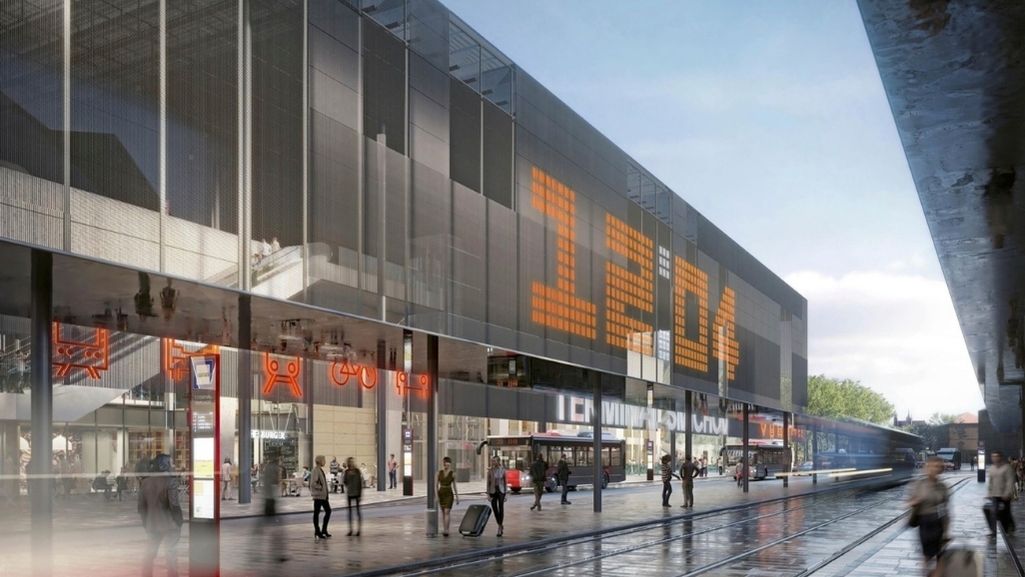
Another significant project on the horizon is the Dvorecký Bridge, aiming to establish a connection between Podolí and Smíchov districts by 2025. The project will include a climbing wall, a skate park, and an amphitheater on the Podolí side. A park adorned with unique and artistic street lighting designed by the renowned Czech artist Kryštof Kintera is also planned for the Smíchov bank of the bridge.

Wenceslas Square is undergoing a multi-phased revitalization process that started with its lower section in 2023 and will progress to its upper portion by 2026. This redevelopment prioritizes enhancing tram connectivity, pedestrian and cyclist accessibility, and overall aesthetics with the addition of new tree rows. The upper section of the project is estimated to cost around CZK 2.1 billion.
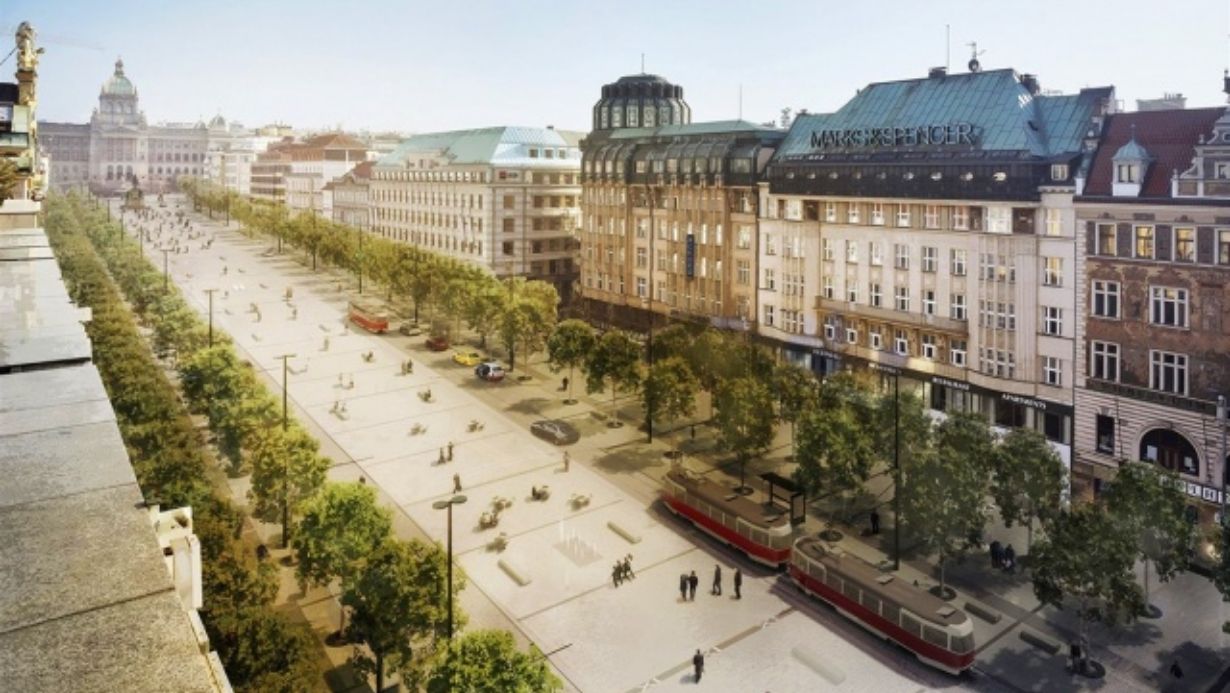
Jiřího z Poděbrady Square, a beloved landmark in Prague’s Vinohrady district, is undergoing a restoration that promises to elevate both its charm and functionality. The project, launched in January 2024, is anticipated to be completed in 2027 with an investment of approximately CZK 478 million. Enhancements include the planting of new tree lines and greenery, designed to provide both aesthetic appeal and ecological benefits.

Furthermore, the construction of the European Union Agency for the Space Programme (EUSPA) headquarters in the previously underutilized Prague 8 Town Hall signifies a pivotal step towards establishing Prague as a hub for space exploration and technology. This project, commencing in mid-2024 and expected to conclude by 2025, carries a price tag of approximately CZK 2.5 billion.
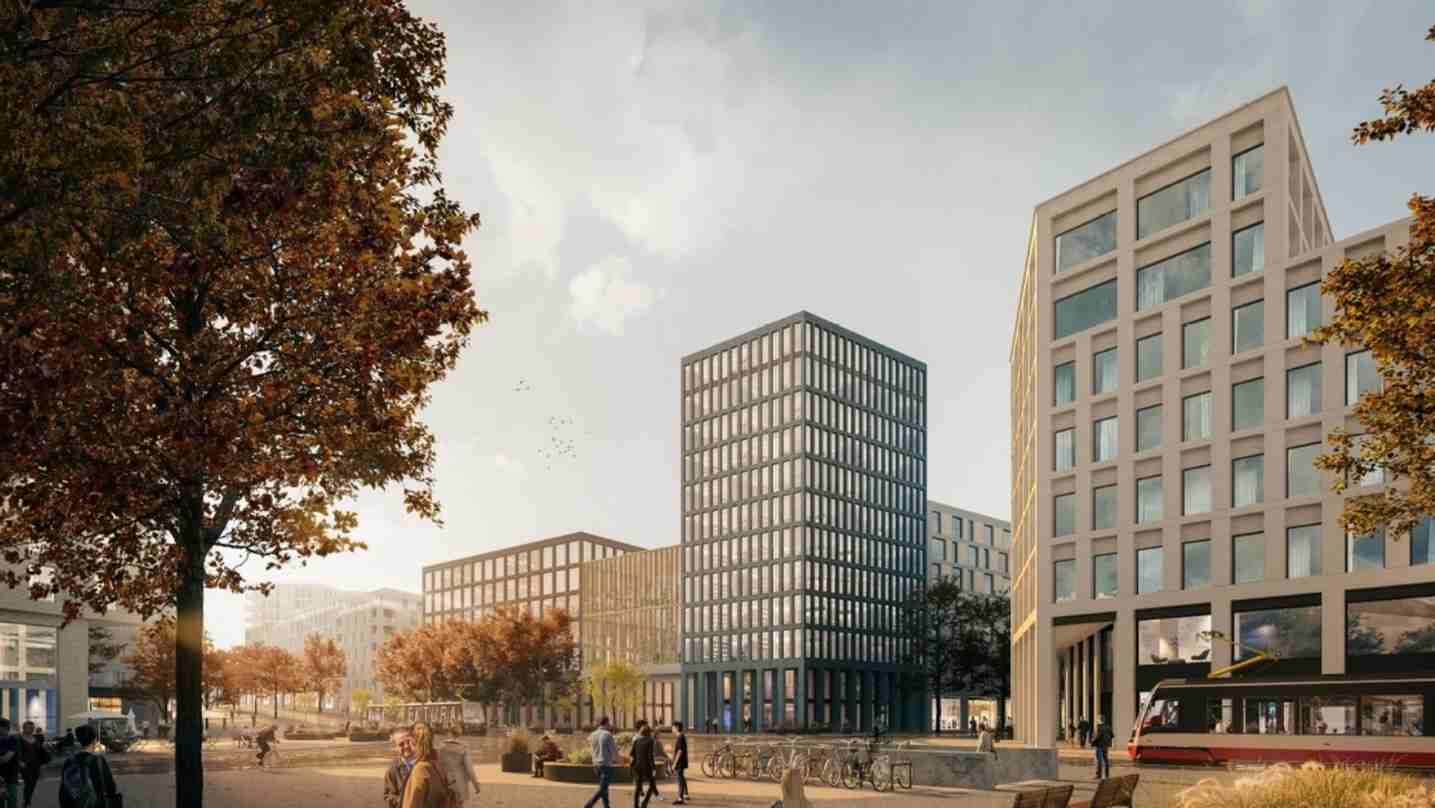
Additionally, the Masaryk Railway Station is slated for a significant upgrade to improve its integration and connectivity with the city. This project, started in February 2024, aims to enhance accessibility and modernize the facilities for an estimated cost of CZK 3.4 billion, with a target completion date of 2027.
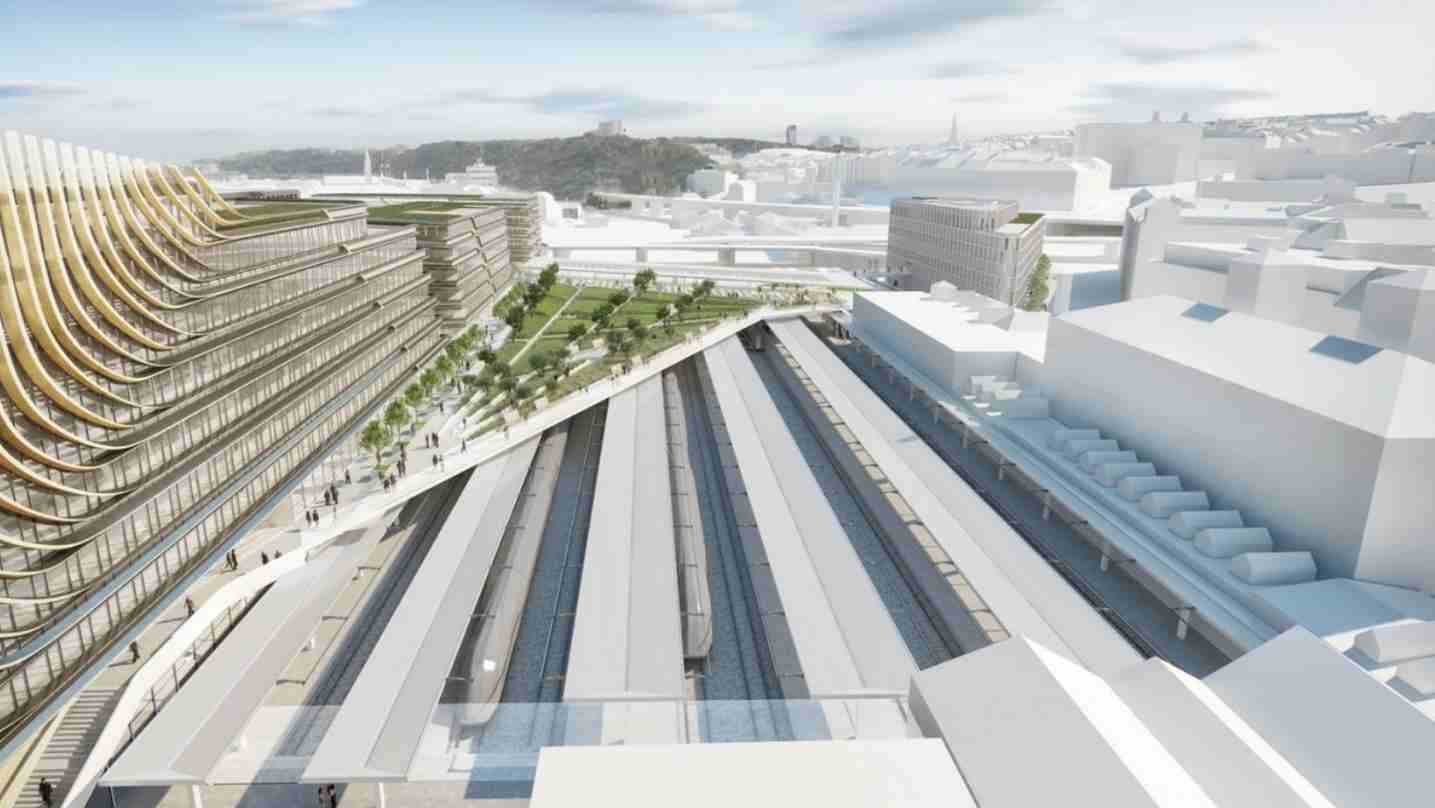
Finally, the city will witness the construction of the highly anticipated metro D line, connecting ten stations over a 10.6 km route. This project, launched in 2023, targets first-stage completion by autumn 2029, with an investment of CZK 14 billion.
